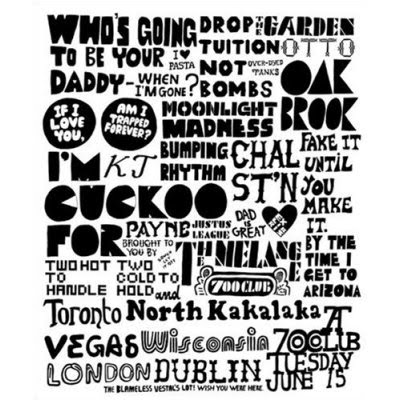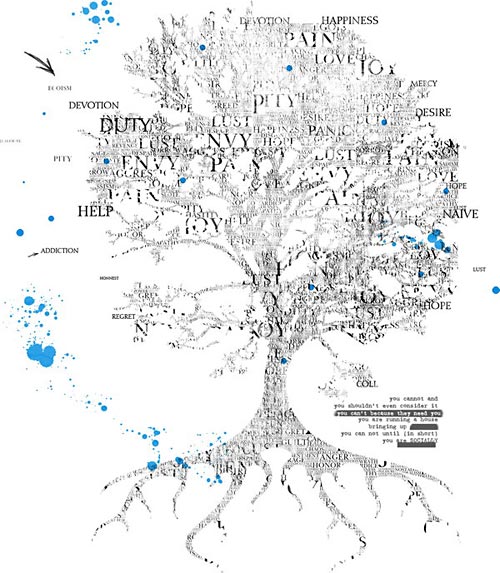Additive color involves light emitted from a source (such as a computer screen or t.v) The additive reproduction process usually uses red, green and blue light (RGB) to produce the other colors. Combining one of these additive primary colors with another in equal amounts produces the additive secondary colors cyan, magenta, and yellow and combining all three primary lights/colors, in equal intensities produces white. Varying the strength of each light/color eventually reveals the full gamut of those three lights/colors. (the full range of colour available while using RGB)

Subtractive color explains the mixing of natural colorants to create a range of colors, where each color is caused by the mixture absorbing some wavelengths of light and reflecting others. The more colour added the more light subtracted and you will create black.

Monotone
Monotone printing is using one colour of ink, but to be more creative you could use different strengths or tints of the same colour. As only one ink is used you can utilise the colour of your substrate as an additional colour to include more colour for less of printing price and for wanted effects.

CMYK and Spot colour
CMYK or Cyan, Magenta, Yellow and Key (black) is the most common method of printing and is often printed through the common process of offset litho printing. The K comes from 'key' and not the k from 'black' as black is the colour used for registration and to mask all the other colours together, mis-registration can cause bad trapping and you will see areas of print that have substrate showing where it shouldn't be or it can create a moire effect. CMYK is a subtractive colour model and the more of colours you place ontop of each other, the darker the image as less light is being reflected. The colours in this processes are often called process colours and to produce colours outside the range of CMYK you would need a Pantone (the most common printing reference for colours) reference number of your chosen colour (which would be a spot colour) This separate colour that isn't achieved through CMYK is specially mixed to your specification using the Pantone referencing system. You can create extremely vivid and metallic colours or dull and subdued colours using these specially mixed spot colour inks. They can also be applied to only specific areas of your print job as they need their own individual printing plate.


RGB
RGB is an additive colour model where red, green and blue light are added together in a variety of ways to reproduce a certain amount of colours attainable by this method. common use of RGB is through monitors for computers and T.V's. A good example of RGB is a website as it is specifically made to be viewed on screen. Colours in RGB tend to be very vibrant as they are made for screen viewing and the light behind the monitor enhances the colours.

Greyscale
This method creates more detailed imagery than a black and white mode (also called bilevel or binary images) as it includes various tones in between black and white giving a richer quality of image.

Duotone & Tritone
Duotone is a generic name for mulitone printing which can be done with two, three or four inks. Duotone is also a term for images using colour separation printing scheme. Any printing that only uses two colours (duo) or three colours (tri) has a similar effect.

Spot foil/varnish
This metallic spot foiled invitation was for my end of year exhibition at college. I've kept it since then because i realled liked the simplicity of it and i think the way the foiling has been used is clever and effective. The scan doesn't do it any justice but it does look really professional and simple in reality.

I really love the cover of issue 115 of Computer Arts Projects magazine which was focused on Print. The cover (see image below) has certain parts spot varnished and i think it looks really interesting and professional, not to mention expensive!

Spot colours are used so that a specific colour in a design will print. If the colour is outside the range or gamut of the four colour process. Special colours have a greater intensity and vibrancy as they print as a solid colour rather than one that is composed of half tone dots. pot colours are made from various based elements mixed according to a specific recipe. Spot colour inks can be bought pre-mixed or mixed by the printer. Often used to print money and passports because the spot colour cannot easily be copied.
No comments:
Post a Comment